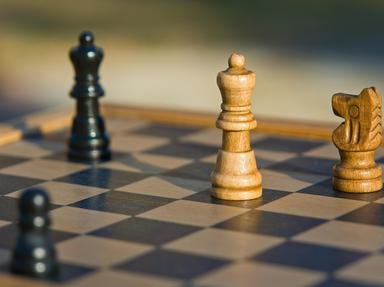Quiz Answer Key and Fun Facts
1. A game is played that leads to a draw by stalemate. What is the least number of moves this game could've possibly taken?
2. Which of these piece combinations aren't capable of checkmating a king in the center of the board, if your king is not involved in the mate? The mated king doesn't have any other pieces.
3. You have only a rook and bishop left, and your opponent has only a bishop and knight left. Which of these statements is true regarding that type of endgame?
4. Black has a king on h8, and a bishop on g8. White has a king is on h6, and a bishop is on d3. White has a pawn on f7 that's about to promote, and these are the only pieces left on the board. What should White do to win?
5. If your opponent is left with only a queen and king, then which of these piece combinations will give you the most likely chance to win?
6. You have a queen and king left on the board, and your opponent has a king, which is supporting a pawn one move from promotion. If it's your turn to move, then which of these statements is true?
Assume that your queen is not able to occupy the promotion square.
7. Your opponent is left with only a queen and bishop. Which of these piece combinations would give you the best drawing chances against the queen and bishop?
8. You have a knight, a bishop, and a pawn left on the board. Which of these statements is true?
9. Which of these moves would have no reasonable significance in the game, if the rules of chess were changed to make the move legal?
10. A game is played that leads to a draw by stalemate, yet no pieces were ever taken. What is the least number of moves this game could've possibly taken?
Source: Author
iggy4
This quiz was reviewed by FunTrivia editor
ozzz2002 before going online.
Any errors found in FunTrivia content are routinely corrected through our feedback system.
